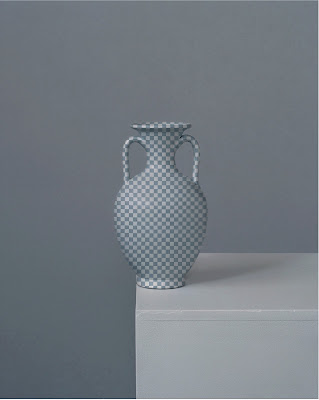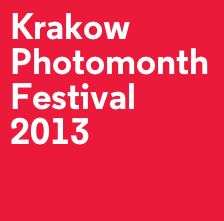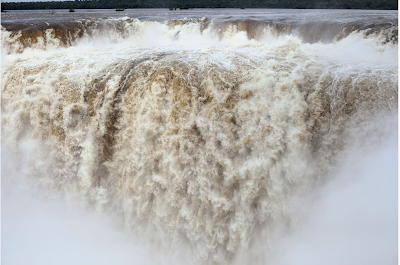We've just heard that places for the FORMAT 13 Portfolio Reviews are selling like hot cakes so act fast, photographers, if you are planning to sign up for them.
1000 Words Editor in chief, Tim Clark, is just one of 45 professionals from the world of photography who will be conducting reviews. This is the most ambitious Portfolio Review FORMAT will ever have hosted and currently the biggest International Portfolio Review in the country with reviewers hailing from a total of 15 countries across the globe. They include Laura Noble, Erik Kessels, Markus Schaden, Peggy Sue Amison, Dewi Lewis and Sheyi Bankale to name but a few. Do not miss out on having your work reviewed by some of the biggest names working in photography. Places are limited, so book your place now to avoid disappointment! Great discounts and prizes also available for those who book.
The Portfolio Reviews are aimed at professional photographers with a developed and serious approach to their work. Recent graduates and non-professionals are welcome. Please contact Sebah Chaudhry at portfolio@formatfestival.com for any queries.
This year, the FORMAT team has devised a new booking system so that reviews can be booked online. This system allows you to choose your own reviews and reviewers. It is a first come first served basis. You can view and select the slots you want.
It is advise you look through the reviewers and make a list of at least 10 that you would like to see, in the order you would like to see them so that you are prepared when you book.
Cost : £195 (No concessionary rates and no refunds).
This includes:
-5 reviews, 20 minutes each between 9.30am – 3.45pm on Saturday 9 March 2013.
-A place in the ‘Portfolio Factory’ which will take place after the Reviews (approx 4.30pm – 6pm tbc). Photographers set up their work on a table and the Public, Reviewers and VIP Guests are invited to walk around, talk to you and view your work. The Portfolio Factory is not compulsory, but it is advised you do consider taking part.
FORMAT have also teamed up with numerous photography specialists around the world to offer these exclusive discounts for photographers who have booked:
-20% off all printing/mounting/framing at Genesis Imaging.
-Discount at Johnsons Photopia Ltd – Billingham bags and other items available (this list will be sent to you after you register)
-25% discount on all rental equipment at The Flash Centre in Birmingham and London stores. Other deals on lighting available on an individual basis, depending on requirements.
-30% off subscriptions to Ojodepez magazine.
1000 Words Editor in chief, Tim Clark, is just one of 45 professionals from the world of photography who will be conducting reviews. This is the most ambitious Portfolio Review FORMAT will ever have hosted and currently the biggest International Portfolio Review in the country with reviewers hailing from a total of 15 countries across the globe. They include Laura Noble, Erik Kessels, Markus Schaden, Peggy Sue Amison, Dewi Lewis and Sheyi Bankale to name but a few. Do not miss out on having your work reviewed by some of the biggest names working in photography. Places are limited, so book your place now to avoid disappointment! Great discounts and prizes also available for those who book.
The Portfolio Reviews are aimed at professional photographers with a developed and serious approach to their work. Recent graduates and non-professionals are welcome. Please contact Sebah Chaudhry at portfolio@formatfestival.com for any queries.
This year, the FORMAT team has devised a new booking system so that reviews can be booked online. This system allows you to choose your own reviews and reviewers. It is a first come first served basis. You can view and select the slots you want.
It is advise you look through the reviewers and make a list of at least 10 that you would like to see, in the order you would like to see them so that you are prepared when you book.
Cost : £195 (No concessionary rates and no refunds).
This includes:
-5 reviews, 20 minutes each between 9.30am – 3.45pm on Saturday 9 March 2013.
-A place in the ‘Portfolio Factory’ which will take place after the Reviews (approx 4.30pm – 6pm tbc). Photographers set up their work on a table and the Public, Reviewers and VIP Guests are invited to walk around, talk to you and view your work. The Portfolio Factory is not compulsory, but it is advised you do consider taking part.
FORMAT have also teamed up with numerous photography specialists around the world to offer these exclusive discounts for photographers who have booked:
-20% off all printing/mounting/framing at Genesis Imaging.
-Discount at Johnsons Photopia Ltd – Billingham bags and other items available (this list will be sent to you after you register)
-25% discount on all rental equipment at The Flash Centre in Birmingham and London stores. Other deals on lighting available on an individual basis, depending on requirements.
-30% off subscriptions to Ojodepez magazine.




















































